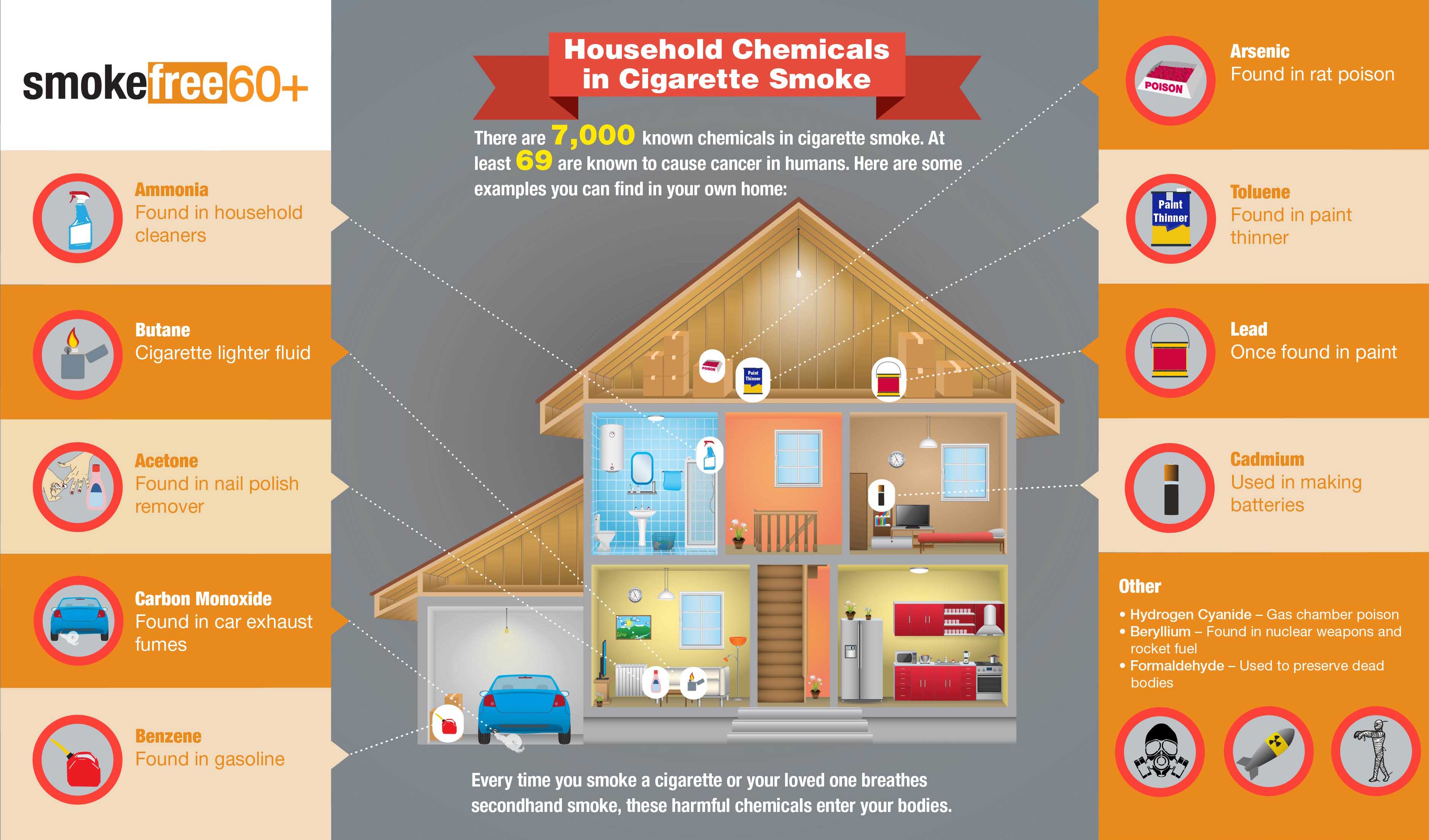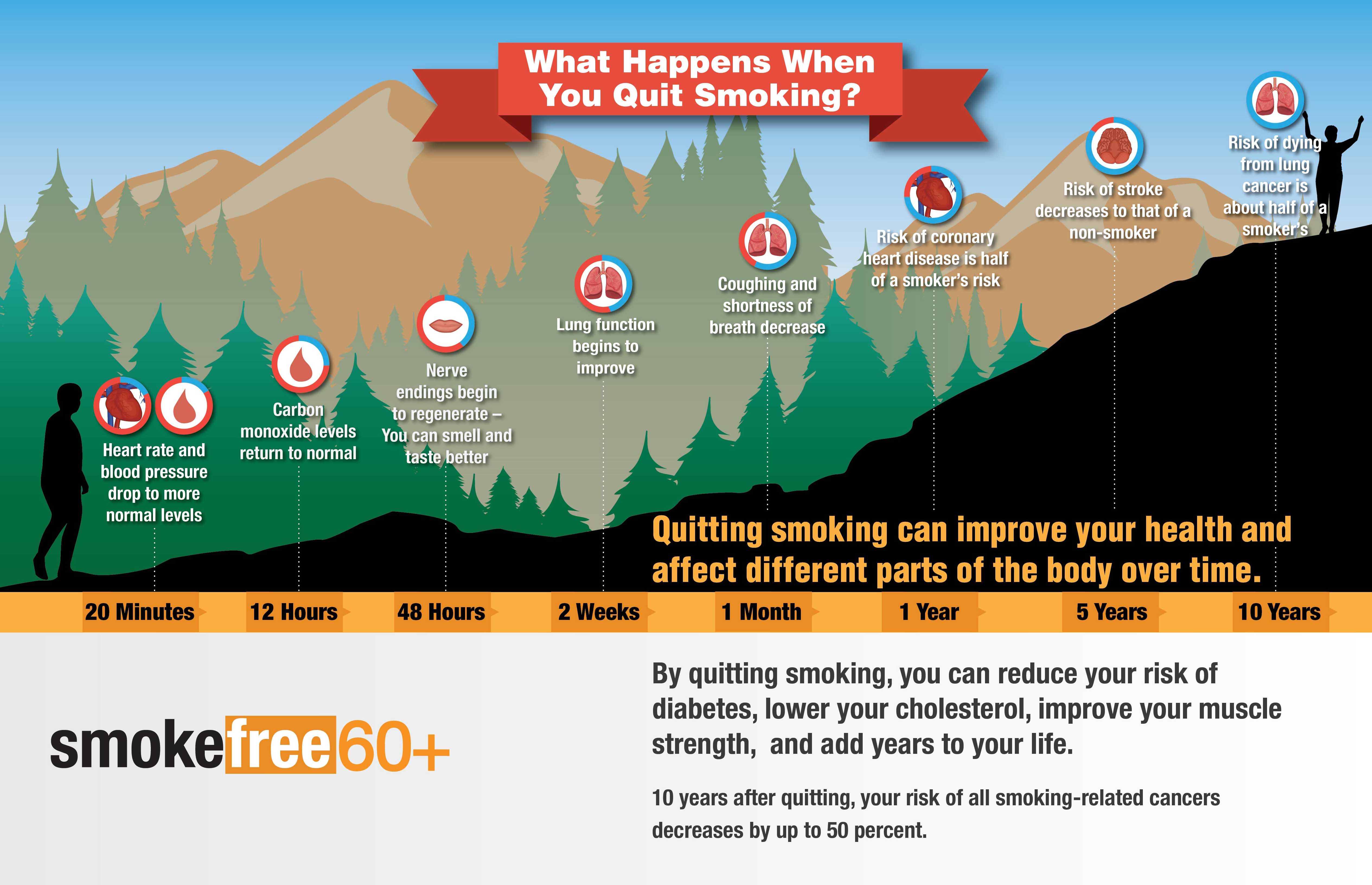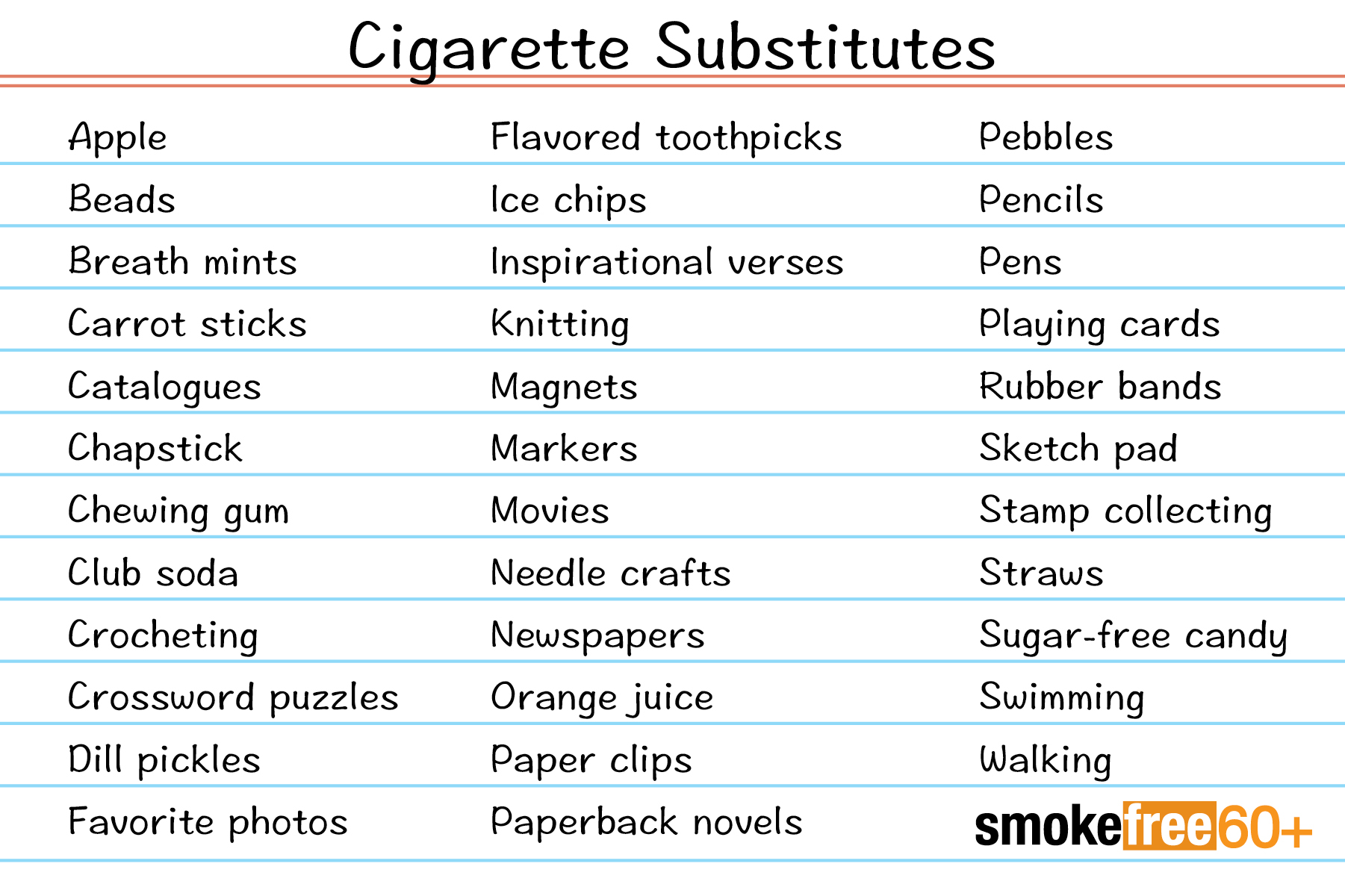These free materials provide additional information and guidance for quitting smoking. Keep these resources handy by downloading or printing them.

SF60+ Quit Plan (2015)
Start your journey to be smokefree today.
This guide contains information and resources to help you quit smoking for good. You may have tried before, or this may be your first time, but following the methods outlined here can help you quit and stay quit. One of the keys to a successful quit is preparation. A great way to prepare to quit smoking is to create a quit plan. While this guide suggests a wide range of tools to help you quit, it is not necessary to use them in order, or complete each section if it does not apply to you.
Or start your quit plan online, here.
Infographics




Clear Horizons (2013)
For smokers over age 50.
If you're a smoker over 50 who's thinking about quitting, Clear Horizons is just for you. Even if you've been smoking for most of your life, you can still quit and reverse much of the damage that smoking has caused to your body. This 24-page guide will help you every step of the way. It contains tools to reinforce your decision to quit, and information about specific methods, such as replacement therapy or quitting cold turkey. Let Clear Horizons help you make the decision to live longer by quitting smoking.
My Quit Journal
The quit journal in Clear Horizons was designed with you in mind. A quit journal can help you track your progress while you are quitting smoking.
Clearing the Air (2011)
For all smokers interested in quitting.
This booklet is designed to help you at any stage—whether you're still thinking about quitting, have made the decision to quit, or have already taken steps to quit and just need help maintaining your new lifestyle. Both ex-smokers and experts have contributed to this guide. Clearing the Air can help people at all stages make it to their final goal—living smokefree.






